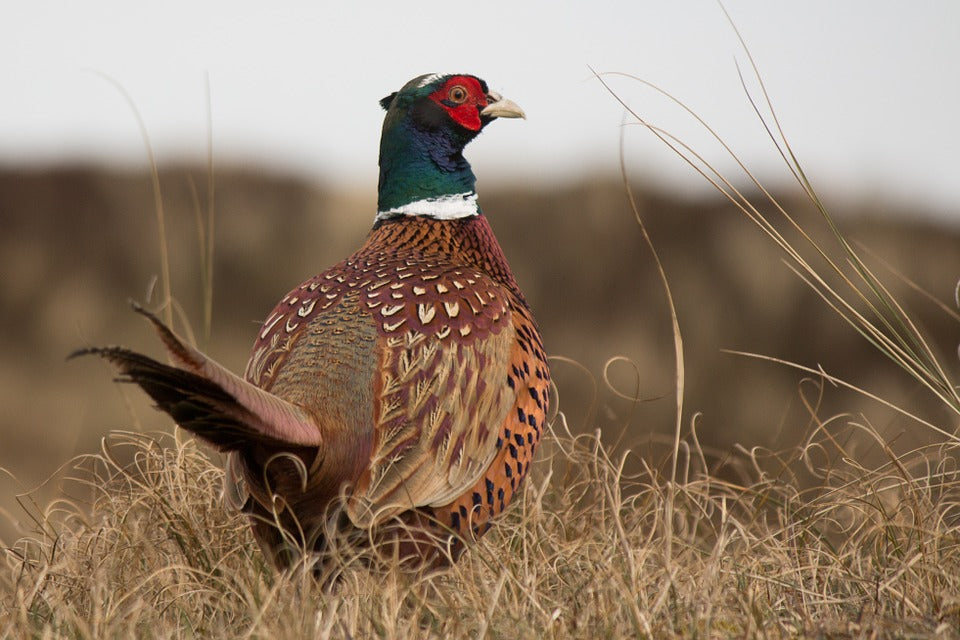Offer
Provide additional details about the offer you're running.
Provide additional details about the offer you're running.
Provide additional details about the offer you're running.

Perhaps one of the most recognizable and aesthetically pleasing game birds is the Ring-necked Pheasant. These large game birds are one of the most sought-after species in by North American hunters due to their appearance and lightning-quick speed. Their powerful breast muscles give this bird remarkable power and when flushed, can reach nearly 40 miles per hour in vertical flight.
Where to Find the Ring-necked Pheasant
These birds can be found throughout the Midwestern United States, and the northeastern regions of the United States along with southern British Columbia, Alberta, Manitoba, Ontario and in the Canadian Maritime provinces. These game birds stick to mixed areas featuring agricultural land and tall vegetation used primarily for cover.
Identification
These birds have a beautiful appearance and may quite possibly be the most pictured/illustrated game bird here in North America. These large, chicken-like birds feature long necks, small heads paired with long legs and a plump body. The males have red faces with green colouring on their neck that prominently features a bold white ring. On the other hand, the females are mostly brown in colour and are equipped with much paler scaling on their upper parts followed by a cinnamon colouring on their underparts. These birds have very long tails, with each sex featuring thin black bars on their easy-to-identify tails.
Vocals
One of the main calls of the ring-necked pheasant is its easily decipherable ‘crow’ call. The males will crow at a seemingly non-stop pace during the spring season, really kicking it up around the dusk and dawn hours. Their crowing calls have been said to sound much like a truncated version of a domestic rooster crowing, but do have a number of other calls in their repertoire they use in other situations. Males will use a couple of excited two-note calls when being flushed, but both sexes will also use a number of specialized calls, often to alert others of dangers, distress and copulation.
High Quality Blend